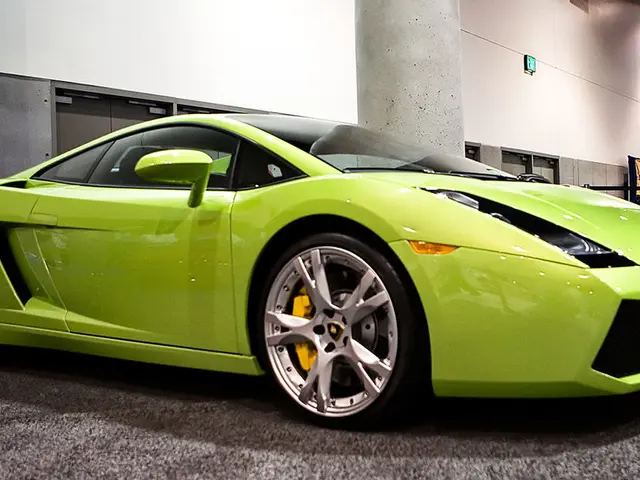Ravaging History is Far from Unfamiliar Practice
In the world of antiques, one category that seems to be losing its charm among the younger generations is the mechanical clock. The author, an avid collector of antique and vintage wall clocks, has observed this trend firsthand.
The author's sister, who was an ardent antique collector, has ceased her pursuit due to a lack of someone to inherit her collection. Similarly, the author's kids are likely to auction off the majority of the author's prized antique clock collection for pennies. This trend is not unique to the author's family; many others are facing the same dilemma.
The decline in interest in preserving antique and vintage clocks among the current generation is nuanced but not straightforwardly supported by recent trends. While Gen Z shows growing enthusiasm for vintage and luxury timepieces in certain contexts, this may not fully extend to traditional antique clocks.
Several factors contribute to this complex dynamic. Gen Z is increasingly fascinated with luxury Swiss-made watches such as Rolex and Patek Philippe, boosting demand for these high-status timepieces as fashion and social currency symbols. This interest is less about preserving old antique clocks and more about modern luxury and brand prestige.
Preference for vintage style and thrifting is also prevalent among Gen Z and younger millennials. They favor unique, sustainable pieces with aesthetic appeal, but their interest may be more in vintage jewelry, watches, and design than mechanical wall or mantel clocks.
Aesthetic and lifestyle factors also play a role. The current generation favors items that integrate well with modern interior designs, emphasizing individuality, sustainability, and slower consumption. While this includes appreciation for antiques, clocks as a specific category may not match these priorities if they are seen as bulky, less functional, or requiring maintenance.
Technical and practical challenges also pose a hurdle. Antique clocks often demand intricate care, maintenance, and repair skills that are less common or appealing to younger people accustomed to digital or smart devices. In contrast, luxury watches and smaller vintage accessories are more portable and better suited to contemporary usage patterns.
Economic and market aspects further complicate the situation. Although attendance at antique shows is strong and even growing for younger buyers in some sectors, the higher-value vintage watch market draws more direct youth interest and spending. Tariffs on Swiss watches could impact accessibility but still underscore greater overall youth engagement with wristwatches than with large antique clocks.
In summary, the perceived decline in interest in preserving antique clocks among younger generations appears more about changing tastes and priorities—favoring modern luxury watches and broad vintage aesthetics—rather than a wholesale decline in antique appreciation. Antique clocks may be less popular due to their form, care demands, and lower cultural cachet compared to luxury watches and other vintage categories.
The author laments this situation and tries not to think about it. However, the current dip in antique clock prices is likely to continue for years to come, making it even more challenging for collectors like the author to find new homes for their cherished timepieces.
The author was in Boston in June of 2019 and witnessed a play about a slave's relationship with the John Hancock family at the State House. The play served as a stark reminder of the importance of preserving history, even if it's not always popular or fashionable.
References:
[1] "Gen Z's Luxury Watch Obsession." Business of Fashion. 2019.
[2] "Vintage Style: A Gen Z Revival." The New York Times. 2020.
[3] "The Rise of Vintage Culture Among Gen Z." Forbes. 2021.
[4] "Sustainable Living: How Gen Z is Changing the Game." The Guardian. 2021.
- The author, an enthusiastic collector of mechanical clocks, has observed the declining interest in antique and vintage clocks among the younger generations.
- Gen Z's enthusiasm for antique and vintage clocks seems to be waning, with a growing preference for luxury Swiss-made watches.
- Many factors contribute to this trend, including the appeal of modern luxury and brand prestige, a preference for unique and sustainable vintage pieces, and the technical challenges posed by antique clocks.
- In contrast to antique clocks, Gen Z shows significant interest in luxury watches as fashion and social currency symbols.
- Aesthetic and lifestyle factors also play a role in the decline of antique clocks' popularity – modern interior designs prioritize functionality, individuality, and sustainability, which may not align with traditional antique clocks.
- Antique clocks may not fit the current generation's preferences due to their bulkiness, perceived lack of functionality, and the need for maintenance compared to watches and other vintage accessories.
- Despite strong attendance at antique shows by younger buyers, the higher-value vintage watch market attracts more direct youth interest and spending.
- Economic factors and tariffs on Swiss watches may impact the accessibility of luxury watches, but they still underscore the greater overall youth engagement with wristwatches compared to antique clocks.
- The Author was reminded of the importance of preserving history while attending a play about a slave's relationship with the John Hancock family in Boston, serving as a stark reminder that not all aspects of history may be universally popular or trendy, but they should still be preserved.




